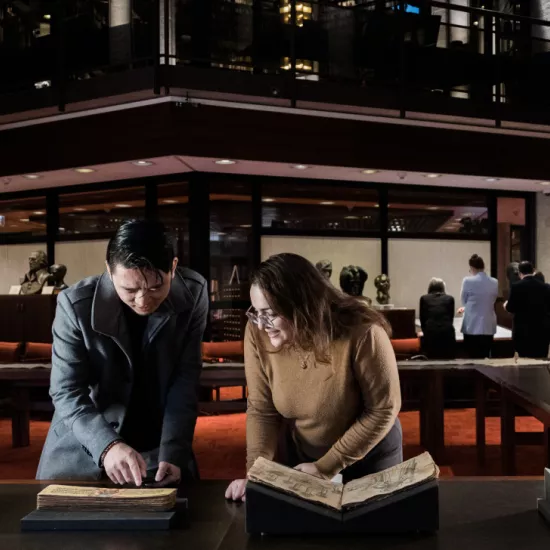New UTM course takes learning to the gym

A group of U of T Mississauga students are ditching their lab coats in favour of gym clothes.
The students are hitting the gym and getting their hearts pumping for a fourth-year physiology course created and taught by biology professor Bryan Stewart, which relies on a first-time partnership with the Recreation, Athletics and Wellness Centre (RAWC).
Every second week, students head to the RAWC for their lab, where they use a myriad of tests to measure physiological responses to activity, including blood pressure and respiratory output. Each week has a specific component; one week students might use electrocardiograms and the next they may learn about respiratory volume.
Students analyze the data they’ve collected during the weeks between labs.
“It is the only course on campus like this,” says Stewart, explaining the labs offer a real-world, hands-on experience that has a practical application.
“It is important they are exposed to this,” Stewart continues, noting not only is it useful for those heading into the medical field, but those who choose a different career path will still be able to speak intelligently with health-care providers about electrocardiograms or gas levels when they, or their relatives, are receiving care.

Calling the new course “beneficial,” Athulya Ajith, a fourth-year biology/psychology student, signed up, in part, because she had never gone to the RAWC to work out and this was one way to stay fit and healthy while also learning new skills.
“The equipment is cool to see,” she says, explaining she’s a hands-on person. The lab gives her a chance to see real results on an actual subject and gives her exposure to testing equipment before she goes to medical school, she says.
Stewart, who recently completed a one-year leave after serving as the Vice Principal, Research, developed the class as a natural continuation of the third-year physiology class he previously taught.
“I have always wanted to do a lab course,” says Stewart, whose first degree was in human kinetics. The third-year class is a foundational physiology course, Stewart explains, while the focus of this new course is about adaptations to a variety of environments.
“The best example is how humans adapt,” Stewart says.
Students use exercise and activity to learn about adaptation, such as examining how someone’s physiology adapts when training, or answering questions like why the resting heart rate decreases over time with exercise. The focus, Stewart says, is what happens on a physiological level.
The key to making the course successful is the partnership with the RAWC, which Stewart says is new for both the gym and the academic arm of the university. The RAWC not only gives students access to exercise equipment, it provides them with a real-world environment where they have to troubleshoot or work around other users.
Stewart, who plans to continue offering the course following this inaugural year, stresses that this course would not be on offer without support not only from the RAWC, but also the university’s academic division.
“I am really happy with the level of support I’ve gotten both from my department and from the Dean’s office,” Stewart says.



